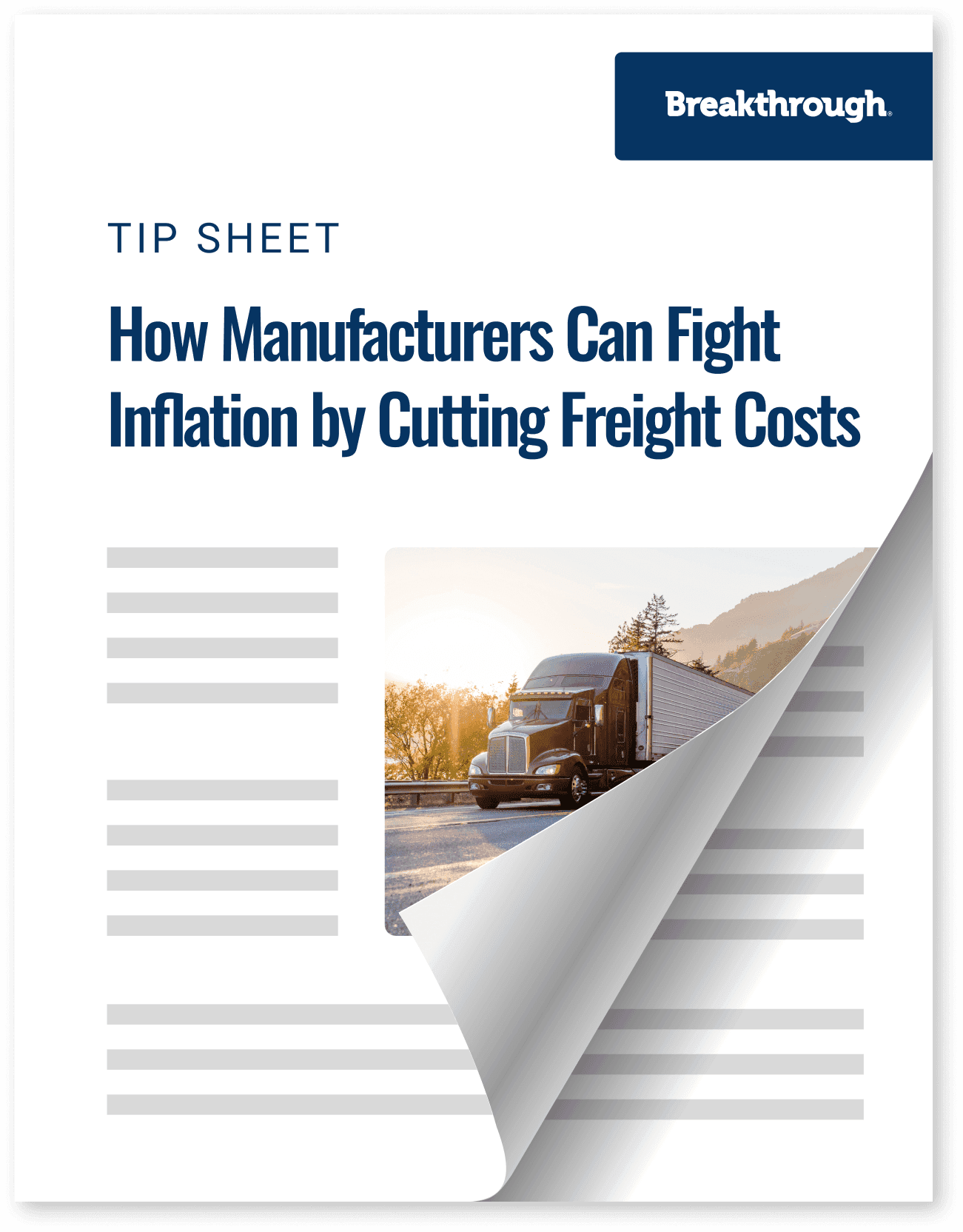制造商如何通过削减运费抗击通胀

热门职位
分享:
目錄
瀏覽目錄以直接跳到您要查找的部分
十年前,"绿色 "举措被认为是一种奢侈品,是提升品牌形象的好东西,只有大公司才会采用。但长期以来,董事会和立法者们一直在讨论企业对环境影响的担忧,但这些努力和行动在历史上一直被置于创收的次要地位。
但是,这样的时代早已一去不复返了。 在过去的几年中,消费者对支持他们所购买商品的更多可持续发展商业实践的愿望变得更加坚定,也更加有教养。
随着企业认识到消费者的需求正在发生变化,他们转变了战略和工作重点,因此支持可持续发展计划的技术和产品,尤其是替代能源和供应链领域的技术和产品,出现了爆炸式增长。
这一趋势还在继续加强,甚至随着 2021 年新一届 美国新一届总统政府 根据埃森哲进行的一项研究,在年收入超过 10 亿美元的 1000 多名企业首席执行官中,99% 的人认为可持续发展将成为企业未来发展的核心。
虽然企业社会责任(CSR)一直备受关注,但我们已经进入了一个讨论、目标和承诺不足以跟上竞争对手步伐的市场。随着越来越多的公司承诺采取重大举措,积极减少温室气体排放 (GHG)、创建内部碳抵消以及 努力实现净中性, 托运人需要关注可行的举措,以支持其在市场中的地位。 在这个利益相关者全面关注、透明度至关重要的世界中,市场领先的组织已经将可持续发展融入了他们的基因。
这种基因的一部分就是 高度关注供应链 可持续发展,虽然许多组织还没有围绕其范围 3 排放制定正式计划,但运输和供应链部门正在进入交叉目标。
了解优先考虑范围 3 排放的重要性,以及运输在其中扮演的角色, .
任何组织的重大变革都需要付出代价。
事实上,许多不同规模的公司都明白,在可持续发展指标方面取得成功会产生实际的底线影响。正如 Whitestone Partners 的顾问 Doug 和 Polly White 在《企业家》Entrepreneur 中写道: "我们将可持续发展与质量同等看待。
换句话说,供应链的可持续发展已经超越了仅仅对_看起来_像一个良好的企业公民_感兴趣的地步,组织正在完全认同_盈利能力_和_可持续发展。从将货物运往市场的燃料消耗,到 模式间转换,到可持续卡车运输行业的减排和其他因素,供应链充满了绿色的可能性,只要有正确的数据和技术合作伙伴,这些可能性都是完全可以实现的。
可持续发展工作的优势覆盖整个组织:
1.提高效率: 减少总体资源将有助于提高运输网络的效率,并最终减少多余的浪费和排放。提高车队燃油效率、最大限度地减少滞留里程以及在运输网络中寻找自然转弯,这些都是提高效率以减少与产品相关的尾气排放,同时削减额外成本的例子。
2.竞争优势: California 的低碳燃料标准,或应对 新一届总统政府。趋势是明确的,可持续发展将继续处于战略的最前沿,因此,从长远来看,在可持续发展项目上投入精力将受益匪浅。
3.风险管理: 当组织采用系统的可持续发展实践时,还可以减轻或避免声誉风险。与等待灾难演变的公司相比,拥有良好记录的组织将更有韧性地应对挑战。哈佛商学院 2016 年的一项研究指出:
"......具有良好企业责任声誉的公司'在危机期间与行业同行相比,股价不会出现有意义的下跌',而企业社会责任声誉不佳的公司,其声誉会下降 "2.
4.招聘: 新一代的年轻专业人士希望看到他们为之工作的公司能够创造价值,而不仅仅是利润。许多人都非常希望能为那些对整个社会产生积极影响的公司工作,而企业社会责任和环保型商业实践对于未来的劳动力来说是极具吸引力的特质。麻省理工学院斯隆商学院的研究报告指出:
"总体而言,研究结果表明,通过提高整个供应链的环境、社会和治理(ESG)绩效,企业可以改进流程、节约成本、提高劳动生产率、发掘产品创新、实现市场差异化,并对社会产生重大影响。"
难怪哈佛商学院的一项研究发现,"高可持续性 "企业的财务表现优于同行。
有关供应链可持续性未来的更多信息,您可以下载我们的《运输领导期刊》此处。
此外,contact us to learn how Breakthrough helps some of the world's largest brands measure and reduce their transportation emissions footprint.